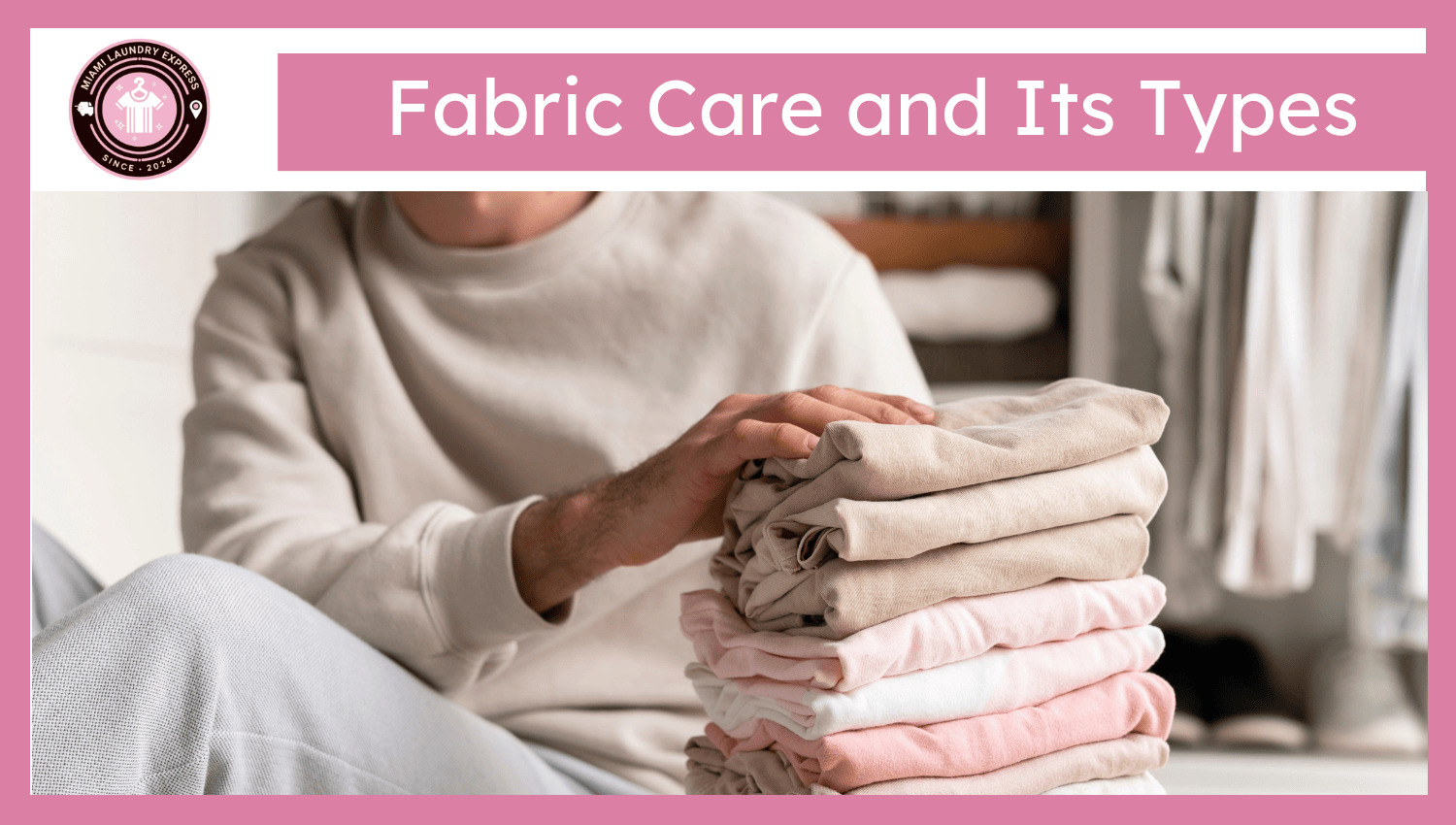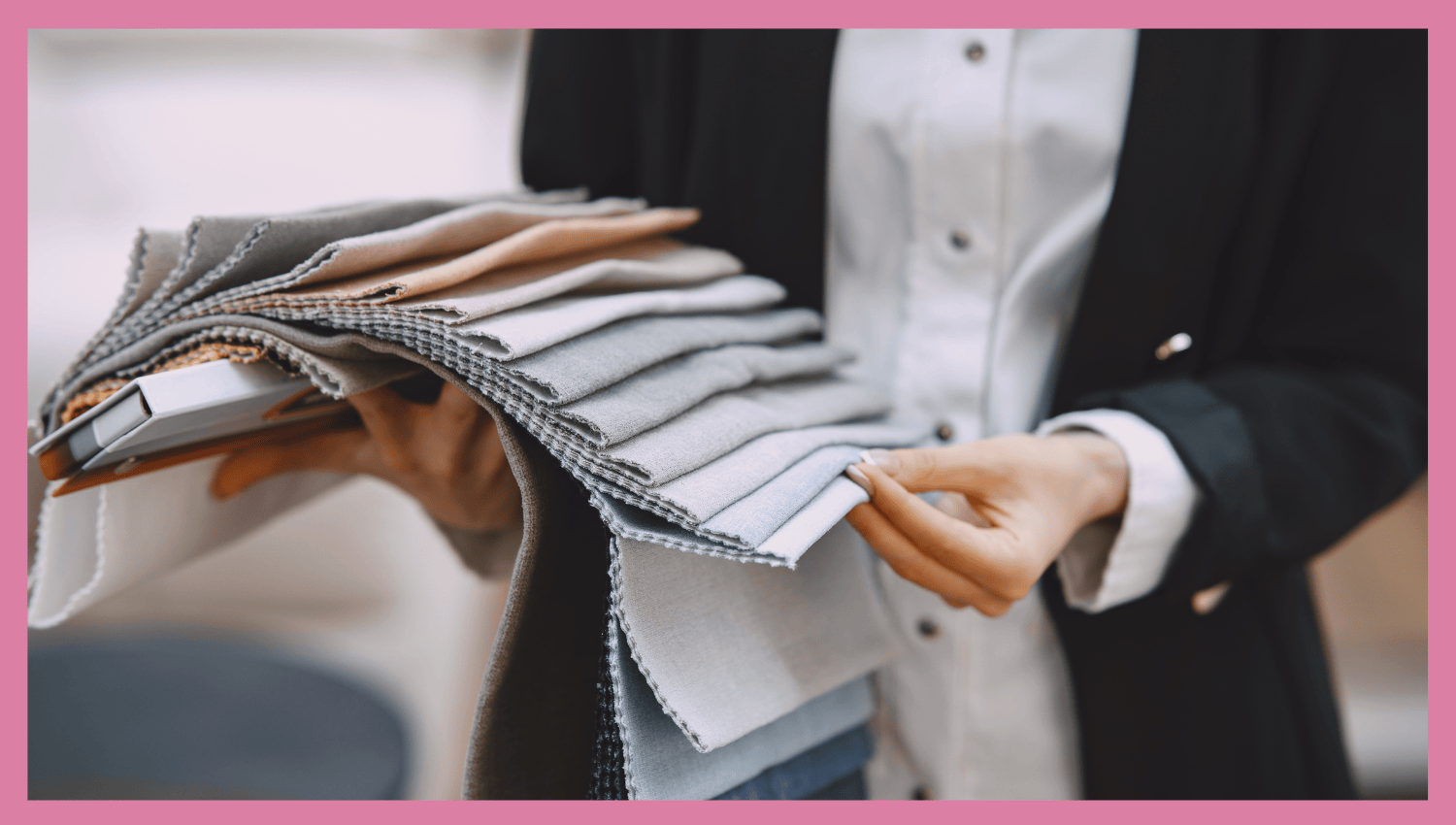Fabrics demand individualized care processes which ensure their quality stays intact while maintaining their physical characteristics and product lifespan. The fabric care process includes five steps: washing, drying, ironing, material-specific treatments in addition to storage. People traditionally cleaned their clothing with natural light sources and water and plant-based soap solutions. The advancement of washing tools together with detergents and electric machines led to fabric care improvements. Textile technology advancements merged with historical customs formulated the methods which people used to care for their apparel. Maintenance of fabric durability as well as its color quality and touch feels requires important fabric treatments for both household use and industrial operations.
Why is Fabric Care Important?
Here are 3 main reasons fabric care is important:
- Maintains Garment Longevity
- Preserves Color & Texture
- Enhances Comfort & Hygiene
Maintains Garment Longevity
Fabric care practices make it possible for clothing to remain in good condition when used multiple times. Following proper care guidelines for washing and drying and using the correct ironing practices enables the protection of material fibres from premature degradation. Proper handling techniques enable clothes to stay longer while delicate pieces and frequently used items benefit the most. Materials such as cotton silk or wool degrade more quickly when people fail to provide proper care for them. The maintenance quality of clean garments extends their use-life which reduces replacement requirements. The practice leads to better clothing worth and decreased material waste which helps personal finances and sustainable environmental choices.
Preserves Color & Texture
The correct care methods for fabrics prevent clothing deterioration since they help preserve both colour vibrancy and fabric texture. The combination of heavy detergents and excessive heat exposure together with careless handling results in fading and causes fabrics to pill and thin over time. Proper cleaning techniques protect textile designs and thread structures so clothes can retain their colour intensity and fabric-supple nature. The proper care required for special fabrics which include velvet, satin or linen maintains their smooth look and aesthetic appeal. The combination of colour-protected washing products, mild cycles and cool water temperatures enhances fabric durability which grants clothing a sharp look after every laundering process.
Enhances Comfort & Hygiene
Clean fabrics create a comfortable environment that also safeguards against both skin annoyances and allergic reactions. The removal of sweat along with bacteria and dirt promotes better hygiene and produces improved sensations in both clothing, towels and bedding. High-quality fabric maintenance enables better breathability which leads to pleasant skin comfort during wear. Unproper fabric cleaning fails to remove all allergens or residues which creates discomfort for users. Regular maintenance routines for textiles ensure personal health protection and deliver a comfortable safe touch which is necessary for personal clothing and household goods.
What are the Types of Fabric Care Methods?
Here are the 7 types of fabric care methods:
- Machine Washing
- Hand Washing
- Dry Cleaning
- Spot Cleaning
- Steam Cleaning
- Air Drying vs. Machine Drying
- Ironing & Pressing
Machine Washing
People frequently use machine washing to clean their daily clothing items. The process of machine washing involves water and detergent with mechanical cleaning action to eliminate stains and dirt. Different fabrics require different cycles which Modern machines provide through their gentle, normal and heavy-duty settings menu. The water temperature setting along with the appropriate spin speed keeps fabric fibres safe. Each laundry item must be separated by colour and fabric type so the materials remain intact while preventing colour transfer. Regular laundry tasks benefit from this approach since it effectively cleans sturdy fabrics such as cotton denim and polyester materials.
Hand Washing
People can wash their hands using water as an effective method to protect delicate fabrics including silk, lace and wool. The process requires items to soak inside diluted detergent solutions while a gentle touch removes surface debris. The process shields fabric structure from mechanical stress through this method. Hand washing provides detailed cleaning for sensitive regions because it avoids damage to fabrics during handling. Hand washing is best used for products which specify “hand wash only” instructions and items with decorative elements. Users keep delicate fabrics well-maintained while preserving their softness along with their good condition through this cleaning technique.
Dry Cleaning
Dry cleaning utilizes solvents to clean fabrics without requiring water as an ingredient. Wool and velvet together with silk benefit from this cleaning method since they have negative reactions to water exposure. A dry cleaning process begins with stain pretreatment, is followed by machine cleaning, and ends with expert pressing. Through dry cleaning fabrics retain both their structure, texture and color. Dry cleaning services mainly work on formal and tailored clothing and delicate items which resist standard laundry procedures. Dry cleaning services restore garments to deliver a fresh-smelling and crisp appearance without any dimensional changes to the fabric.
Spot Cleaning
Small stains and marks on clothing and fabric items require spot cleaning which handles these problems without requiring a full wash. The method provides effective maintenance for specific surface stains and marks on any type of textile. Cleansing elements and soft tools are used to dab and lift affected spots while avoiding stain dispersion. This cleaning method ensures that other parts of the garment remain in excellent condition. You can use spot cleaning to maintain freshness on delicate fabrics, upholstery and rarely used items until their next dry cleaning or full washing.
Steam Cleaning
The combination of heated steam along moisture conducts three functions: it refreshes fabrics while destroying germs while also softening small wrinkles. This technique allows the safe treatment of fragile materials because it operates through contactless application. The process of steam application removes surface debris and deep odour molecules and relaxes textile structures to maintain a clean state. You can use steam cleaning on drapes and formal outfits and dresses which washing is impractical. Steamers enable quick fabric cleansing through water vapour while minimizing detergent use to protect fabric condition and feel.
Air Drying vs. Machine Drying
Washing completion requires either natural drying through the air or utilizing machine-based drying methods. The natural drying process works through clothing hang-up that shields delicate materials and maintains fabric integrity. Hot air tumbling machines accelerate drying by regulating temperature and motion despite fabric threats stemming from incorrect usage. The selection of drying procedure depends on what material you dry. Light textile materials work best with natural air drying but machine-drying performs better on sturdy items such as towels.
Ironing & Pressing
When you iron and press fabric you smooth wrinkling and improve fabric shape. The back-and-forth motion with heat application in ironing produces effective results for casual wear clothing. The technique of pressing requires users to lift the iron and set it down gently to treat formal wear along with seams and pleats. We can achieve better clothing display and better fabric structural maintenance through these methods. The proper temperatures together with proper techniques are necessary for protecting various materials from harm. The method restores neatness and creates a well-finished clean look after washing or dry cleaning.
What are the Fabric-Specific Care Guidelines?
Here are the fabric-specific care guidelines:
- Cotton
- Silk
- Wool
- Linen
- Polyester
- Denim
- Nylon
- Rayon
Cotton
Cotton is a durable, breathable material used to make practical everyday wear and household products. Warm or cold water machine washing is acceptable for cotton fabric. Regular care involves using a mild detergent in combination with low heat settings to protect cotton fabric softness while retaining colour quality. The drying process at low temperatures or using air instead of heat helps prevent cotton fabric from shrinking. Medium heat ironing operations help effortlessly reduce wrinkles. The separation of light from dark cotton fabrics in advance stops the colour transfer. Regular proper care methods make cotton garments stay fresh along with remaining long-lasting while requiring minimal investment.
Silk
Silk is a fragile soft textile that derives from natural thread fibres. Washing silk items in cold water using gentle detergent preserves their shape and texture. The fabric remains free from stretching when you avoid twisting or wringing it. Low-heat pressing through a cloth layer protects silk fabric shine. When silk items receive no direct sunlight and flat storage or hanger methods they preserve their good state. Dry cleaning handles most formal silk clothing while hand washing handles scarves and slips effectively.
Wool
Wool represents a dense material which humans produce by extracting animal fibres from sheep’s wool along with alpaca fibres. The fabric is delicate so it needs calm hand washing methods along with dry cleaning to safeguard its form. Wool requires cold water treatment combined with detergent specific for wool. To remove wrinkles it is best to press your clothing with a steam setting using a cloth. When folding wool items it is best to keep them away from hanger stretch. Cold dry areas provide effective protection against moths. Regular brushing along with proper air circulation enables wool items to stay fresh while avoiding both extensive washes and fabric damage.
Linen
Linen originates from flax to create this durable breathable fabric. The fabric tolerates cool and warm water with minimum detergent requirements. Linen develops softness with age yet it tends to fold unattractively. Ironing linen when there is still moisture present to achieve the best possible outcome. When compared to machine drying stretching is fewer because linens dry better outdoors. When stored in dry conditions linen remains free from the development of mildew. Light-coloured linen maintains its brightness best by staying in the shade. Regular simple care methods both protect the durability of linen fabrics and maintain their natural crispness.
Polyester
Polyester delivers excellent durability and resists wrinkles as a synthetic fabric that commonly appears in activewear and blend fabrics. The fabric can go through a machine washing cycle using cold or warm water together with gentle detergent. Polyester dries fast while resisting size changes so it works well for handling and stays free of shrinkage. Keeping linens out of dryer high heat settings maintains their original shape. A gentle application of steam or heat at low temperatures eliminates wrinkles from the fabric. The application of static control sprays together with fabric softeners helps fabric reduce static cling. Regular washing maintains polyester fabric colors as well as shape preservation which makes it suitable for both active users and daily clothing needs.
Denim
The heavy cotton fabric made of denim exists primarily for jeans, jackets and skirts. A mild detergent and cold water are needed to maintain the colour of this fabric. Washing denim with its fibres oriented inside first preserves the exterior surface condition. The drying process by air enables both shrinkage prevention and shape retention. Denim fades at a quicker rate with frequent washing which means occasional spot cleaning provides sufficient care. Ironing remains optional yet requires the use of steam during the process. The correct storage method is to keep items folded rather than hung up. The fabric of denim naturally softens with wear, but it remains durable and resistant to damage.
Nylon
Nylon serves as a lightweight synthetic material which appears within sportswear along with hosiery and outerwear. The fabric works suitable for machine washing in cold water using a non-abrasive detergent. When nylon fabric is exposed to heat during washing and drying, it retains its strength. The best drying method is air drying or the low-tumble machine cycle. Nylon produces static electricity therefore using fabric softeners or anti-static sprays reduces this effect. Nylon is quick-drying and resistant to wrinkles so it works well for both travel and daily activities. Nylon maintains its flexibility and smooth appearance when users perform appropriate handling steps.
Rayon
Rayon represents a semi-synthetic fabric which originates from wood pulp sources. The fabric texture mimics silk both in feel and requires light maintenance. Rayon fabric stays soft by washing it in cold water with mild detergent solutions. The act of twisting or wringing poses a risk to rayon fibres. A flat surface during air drying helps protect rayon fabric from stretching. A cloth and low heat press method works best for eliminating wrinkles on fabric. The moisture content in rayon affects its strength so you need to handle it with extreme caution. Wet care treatments preserve rayon’s natural drape while protecting its basic structure.
What are the Symbols & Labels: How to Read Fabric Care Tags
The manufacturer attaches fabric care symbols which provide care instructions for cleaning and handling clothes. Garment labels use common symbols which represent washing in a tub, bleaching with a triangle, square drying, ironing with an iron and circular dry cleaning usage. The identity of the cycle type appears as lines beneath tub markings or circles. Dots indicate heat levels. The information on these labels allows us to find suitable care treatment for each fabric which prevents problems such as fading and shrinkage.
Professional Fabric Care Services in Miami
Miami professionals who specialise in fabric treatment maintain both the features and durability of various textile materials. The services provide complete care for clothes through washing, drying and ironing and dry cleaning techniques adapted to specific fabrics. Follow label instructions and turn to gentle fabric-safe products as experts handle textiles. All pieces of clothing receive expert care whether they are silk pieces or sturdy denim items. Every session aims to produce clean clothes that stay fresh and maintain outstanding longevity.

![The_Laundry_Express (2)[66]](https://miamilaundryexpress.com/wp-content/uploads/2025/02/The_Laundry_Express-266-1.png)



